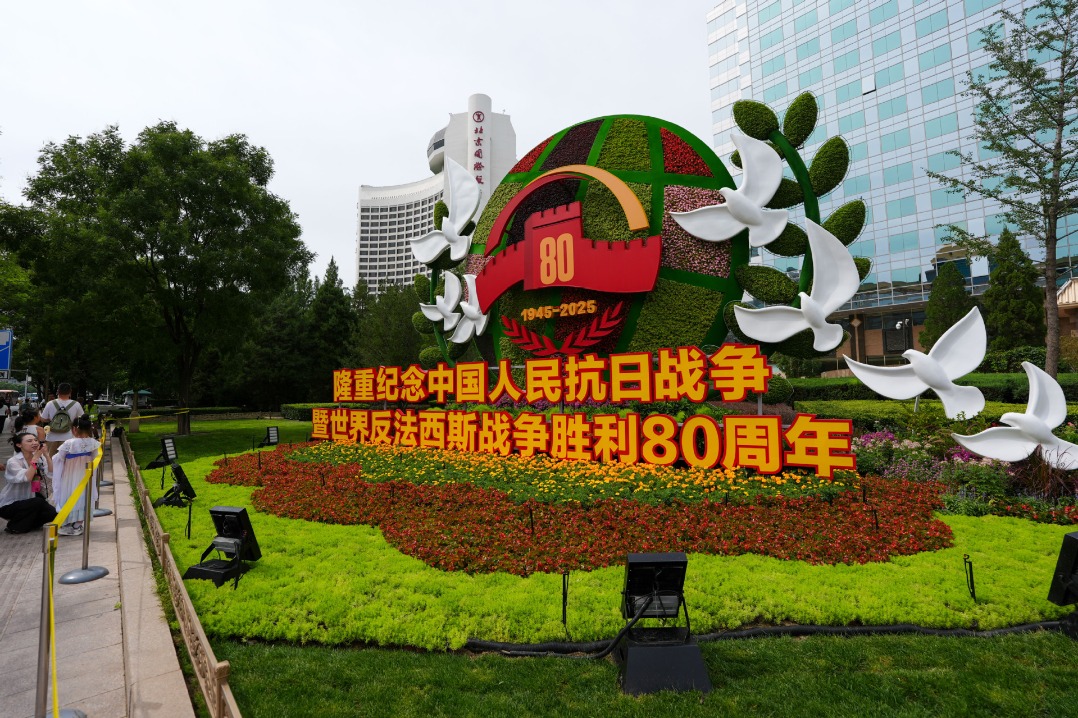Paper chase opens chapter on history
Advanced technology helps unite Dunhuang manuscripts, with the completed database now available to the public, report Wang Kaihao in Beijing and Ma Jingna in Lanzhou.

It was a feat that would have made any detective or researcher proud. Fragments of information have been painstakingly restored to shed light on a fascinating era. After more than a century, scattered ancient documents marking cultural exchanges along the Silk Road have been "reunited" in a digital form and finally revealed to the public.
A comprehensive database of the Dunhuang manuscripts (dhyssjk.dha.ac.cn) was released online by Dunhuang Academy in Gansu province on Friday. It includes their basic information, digitized images, transcripts of the full texts, and related documents of academic studies.
"Through this full information bank of Dunhuang documents, their data can be accessed by the world's academia," says Ma De, a researcher with Dunhuang Academy who is the leading expert of the database. "Different fragments of related work can also be searched in the system."
Friday marked the third anniversary of President Xi Jinping's visit to Dunhuang Academy, in which he emphasized the importance of promoting Dunhuang studies and the sharing of related resources in digital format.
In 1900, a large number of precious ancient manuscripts and documents, ranging from the 4th century to the 11th century, were stumbled upon by a Taoist monk in a grotto among the Mogao Caves, spanning the cliffs of Dunhuang in the west of Gansu province. That grotto, today coded No 17 Cave in Mogao, is commonly called "the library cave".
The findings were later collectively known as "the Dunhuang documents" and are crucial references for the study of history, archaeology, religion, language, and other fields, not only in ancient China, but also other regions in East, Central, and South Asia.
However, China faced a deep social crisis around 1900, and the Qing Dynasty (1644-1911) government thus had little available resources to safeguard the new discovery in time. Numerous Western scholars and "explorers" swarmed to the Mogao Caves after realizing the true significance of this trove, leading to many of the pages ending up overseas.
The caves were inscribed onto the UNESCO World Heritage List in 1987, one of the earliest entries from China. Nevertheless, losing text treasures remains a lasting regret for guardians of this cultural wonder.
It is estimated that about 70,000 pieces of Dunhuang documents survive to date around the world, but only around 20,000 of them are in China, while the rest are housed in dozens of institutions in countries like the United Kingdom, France, Russia, Japan, and others. For example, the world's oldest known print work, the Diamond Sutra from the year 868, which was found in "the library cave", is now housed in the British Library.
No uniformed worldwide catalog of these documents have been established. Consequently, a project was started in 2012, seeking to introduce a system to digitally categorize the collections of Dunhuang documents in institutions at home and abroad.
It was jointly led by Dunhuang Academy, an institution in charge of protection and studies of Mogao Caves and several other key grotto sites in Gansu province, and a computing science team of Hangzhou-based Zhejiang University.
According to Ma, uniting Dunhuang documents worldwide can be realized through the new digital platform, cooperating with institutions like the National Library of China, the British Library, the State Hermitage Museum in St. Petersburg, the French National Library, and so on.
For instance, the project registering new data of Dunhuang documents in France is ongoing. It is also a preparation for the upcoming publishing of the full collection of Dunhuang documentations.
"Physical duplicates of the relics from 'the library cave' can also be kept as properties of the Dunhuang Academy, and serve for studies and publicity of cultures of Mogao Caves in a long term," Ma says.
Dunhuang documents can offer inspiration for historical studies. For example, they can enlarge the horizon of studying Chinese calligraphy.
"Writing is the basic element of a book, so daily writing should have been a focus for studies of calligraphy," Shi Rui, an associate researcher with Ancient Chinese History Research Center of Peking University, says. "But people usually center on the famous artists' renowned works. However, recent studies of relics like the Dunhuang manuscripts can greatly help our understanding of development of the writing system."
Rong Xinjiang, a history professor also at Peking University, says the manuscripts provide key complements to grand pictures of official historical recordings.
"Many Dunhuang manuscripts recorded folk stories, and, surely, they can replace history books," Rong says. "But these raw materials bring us a perfect perspective to observe the original facets of a society."
He adds: "Beyond the orthodox historical recordings on politics, dynastic rise and fall, as well as wars and conflicts, in the manuscripts, we can see the 'ordinary' history of people's lifestyles and ideas, which are closer to the truth of history per se."
Rong also highlights the irreplaceable status of Dunhuang documents studying how Buddhism developed in North China through the continuum of materials throughout various dynasties.
Zhao Xiaoxing, director of Dunhuang Textual Research Institute, which is affiliated to Dunhuang Academy, says the new database is an expansion of past decades' established studies of Dunhuang documentations, and will lay a foundation for more conservation and academic programs.
"Through the manuscripts, we can also strengthen our understanding of how various ethnic groups of Northwest China mixed into the big family of a Chinese nation," she says. "That will consolidate our shared identity."




Today's Top News
- China, India should jointly maintain peace in border areas, Defense Ministry says
- Beijing to host high-level global security conference in September
- 26 foreign leaders to attend China's V-Day commemorations
- Artificial intelligence can power Xizang's leap into a better future
- Export of trade in services a priority
- SCO helping develop a multipolar world order






























